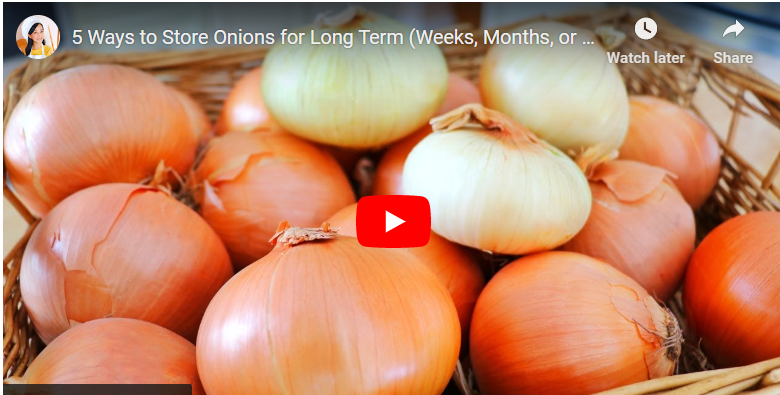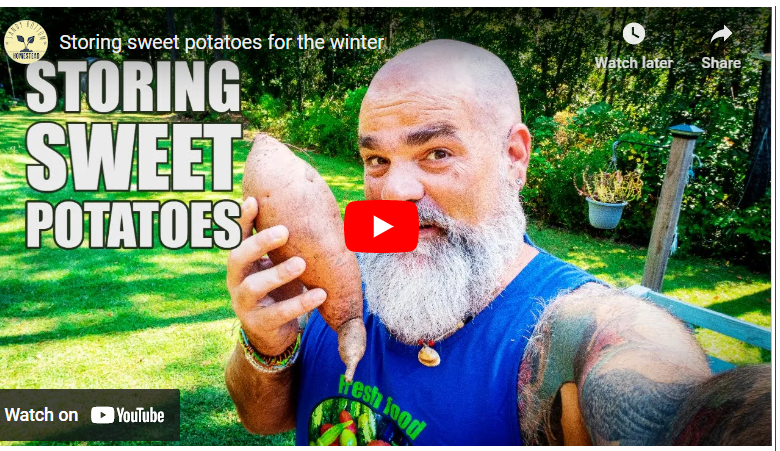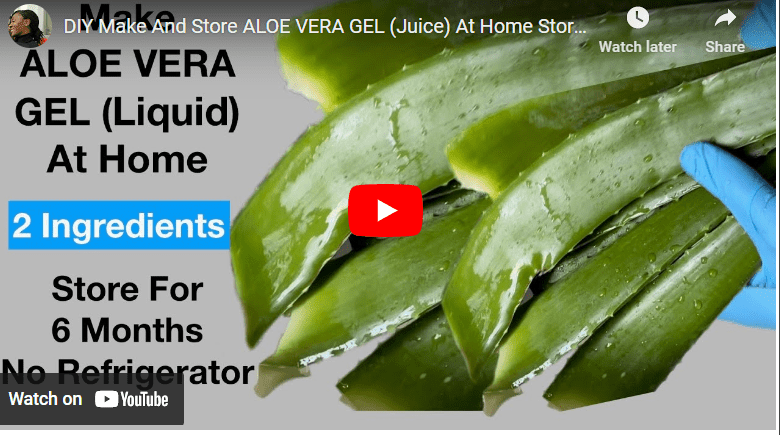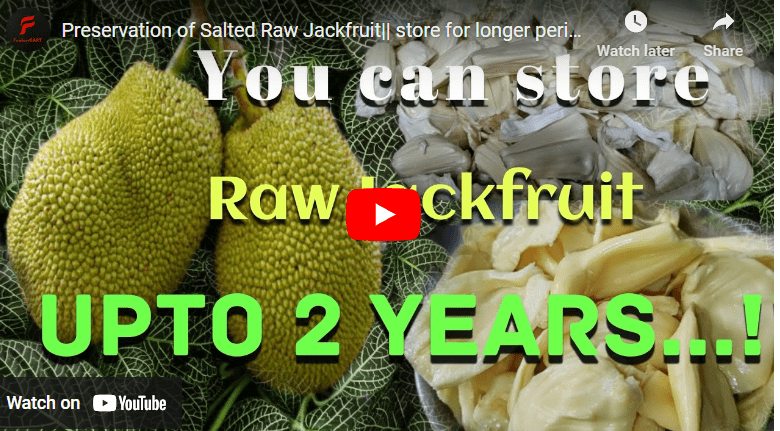Preserving onions for long-term storage is important if you want to enjoy their health benefits and unique flavor throughout the year.
Onions contain essential vitamins and minerals, including vitamin C, dietary fiber, and sulfur compounds, that make them crucial ingredients in many recipes. Proper preservation can help you to avoid wastage and reduce your grocery bill.
Preserving onions for long-term storage can be done by drying, curing or freezing them. To dry onions, cut them into thin slices and dry them in the sun or in a dehydrator. To cure, cut off the onion’s root end and hang the onions in a cool, dark place to dry. To freeze onions, cut them into thin slices and place them in a freezer bag. Keep the onions in a cool, dry place for long-term storage.
How To Preserve Onions For Long Time Storage
It is important that you learn the proper techniques to preserve your onions to avoid wastage. Follow the steps discussed below to preserve onions for long time storage.
Read Also: How To Preserve Okra For Long Time Storage
Step 1: Choosing the Right Onions
Not all onions are suitable for long-term storage. To ensure that your onions remain fresh and flavorful for months, you need to select the right type of onion. The best onions for storage are those with a high dry matter content and a thick, papery outer layer. The following are some of the types of onions that are ideal for long-term storage:
#1. Yellow onions:
Yellow onions are the most common type of onion and have a thick outer layer that protects the onion’s inner layers from moisture and air.
Read Also: How To Preserve Oha Leaves For Long Time Storage
#2. Red onions:
Red onions are sweet and have a crisp texture that makes them perfect for salads and other raw dishes. They have a thinner outer layer than yellow onions, but they can still be stored for long periods.
#3. White onions:
White onions have a mild flavor and are used in many Mexican and Southwestern dishes. They have a thinner outer layer than yellow onions but can still be stored for several months.
Read Also: How To Preserve Green Peppers For Long Time Storage
When selecting onions for storage, look for onions that are firm and have no signs of damage, such as cuts or bruises. Avoid onions with soft spots or signs of mold, as they will not store well.
Step 2. Preparing Onions for Storage
Before you store your onions, you need to prepare them properly to ensure that they remain fresh and free from mold and rot. The following are some of the steps you should follow when preparing onions for storage:
Read Also: How To Preserve Kiwi For Long Time Storage
Step 1. Cleaning Onions
Cleaning onions is essential to remove any dirt or debris that could attract moisture and lead to mold growth. Start by removing any loose dirt or debris with a dry brush or cloth. You can also rinse the onions under cold water, but make sure to dry them thoroughly with a clean towel before storing them.
Read Also: How To Preserve Rice from Weevils
Step 2. Curing Onions
Curing onions involves drying them in a warm, dry place for several weeks. This process allows the outer layer to dry and harden, which helps to protect the onion’s inner layers from moisture and rot.
Read Also: How To Preserve Locust Beans For Long Time Storage
To cure onions, start by tying them together in small bunches and hanging them in a well-ventilated area, such as a shed or garage. Make sure to space the onions out so that air can circulate around them.
Leave the onions to cure for two to three weeks until the outer layer is dry and papery.
Step 3. Trimming Onions
Trimming onions involves removing any damaged or discolored parts of the onion to prevent mold growth. Start by removing the roots and the stem from the onion. You can also remove any papery or discolored layers of the onion, but be careful not to remove too much, as this can expose the inner layers of the onion to moisture.
Read Also: How To Preserve Green Peas For Long Time Storage
Step 3. Storage Techniques
Once you have prepared your onions for storage, you need to choose the right storage method to ensure that they remain fresh and flavorful for months. The following are some of the most effective storage techniques for onions:
Step 1. Storage Conditions
It is important that you store your onions in a cool, dry place with good air circulation. Ideally, the temperature should be between 32 and 40 degrees Fahrenheit with a humidity level of around 65%. High humidity levels can cause onions to rot, while low humidity levels can cause them to dry out and become shriveled
Read Also: How to Preserve Irish Potatoes For Long Time Storage
Step 2. Different Storage Methods
There are several storage methods you can use to preserve onions for long-term storage. The following are some of the most effective storage methods:
#1. Hanging Onions
Hanging onions is a traditional storage method that involves hanging onion braids or strings from a hook or nail in a cool, dry place.
To hang onions, tie the cured onions together by their stems, leaving a few inches of space between each onion. Hang the braids or strings in a cool, dry place, such as a basement or root cellar.
Read Also: How To Preserve Jackfruit For Long Time Storage
Make sure to inspect the onions regularly for signs of spoilage, and remove any onions that show signs of mold or rot.
#2. Storing Onions in Mesh Bags
Storing onions in mesh bags is a popular storage method that allows air to circulate around the onions, preventing mold growth. To store onions in mesh bags, place the cured onions in a mesh bag and tie the bag shut.
Make sure to label the bag with the date and type of onion. Store the bag in a cool, dry place with good air circulation.
Read Also: How To Preserve Lettuce For long Time Storage
#3. Storing Onions in Boxes or Crates
Storing onions in boxes or crates is an effective storage method that allows air to circulate around the onions, preventing mold growth.
To store onions in boxes or crates, place the cured onions in a single layer, making sure to leave space between each onion.
Label the box or crate with the date and type of onion. Store the box or crate in a cool, dry place with good air circulation.
Read Also: How To Preserve Green Beans For Long Time Storage
#4. Storing Onions in a Root Cellar
Storing onions in a root cellar is a traditional storage method that involves storing the onions in a cool, dark, and humid environment.
A root cellar is an underground room or storage area that provides a stable temperature and humidity level.
To store onions in a root cellar, place the cured onions in a single layer in a basket or crate. Make sure to label the basket or crate with the date and type of onion.
Read Also: How to Preserve Ogbono For Long Storage
Store the basket or crate in a root cellar with a temperature between 32 and 40 degrees Fahrenheit and a humidity level of around 65%.
Step 3. Labeling Onions
Labeling your onions is essential to keep track of when they were stored and what type of onion they are. Use a waterproof marker or label maker to label the storage container or bag with the date and type of onion. This will make it easier for you to rotate your onions and ensure that you use the oldest onions first.
Read Also: How To Preserve Lemon For Long Time Storage
Step 4. Monitoring Stored Onions
It is essential to monitor your stored onions regularly for signs of spoilage, such as mold or soft spots. The following are some tips for monitoring stored onions:
Step 1. Checking Stored Onions for Signs of Spoilage
Check your stored onions regularly for signs of spoilage, such as mold, soft spots, or a foul odor. Remove any onions that show signs of spoilage immediately to prevent the spread of mold or bacteria.
Read Also: How To Preserve Ginger For Long Time Storage
Step 2. Rotating Onions
Rotating your onions is essential to ensure that you use the oldest onions first. To rotate your onions, simply move the oldest onions to the front of the storage container or bag and move the newest onions to the back. This will ensure that you use the oldest onions first, preventing spoilage and reducing wastage.
Advantages Of Preserving Onions For Long-Term Storage
- Cost savings: Buying onions in bulk and preserving them for long-term storage can be cost-effective as it can reduce the need for frequent trips to the grocery store.
- Convenience: Preserving onions for long-term storage allows you to have a steady supply of onions on hand throughout the year without having to worry about running out of them.
- Nutritional value: Onions are rich in vitamins and minerals, and preserving them for long-term storage allows you to enjoy their health benefits all year round.
- Flavor retention: Properly preserved onions can retain their unique flavor and aroma for several months, ensuring that your dishes are always flavorful and delicious.
- Versatility: Onions are a versatile ingredient that can be used in a wide range of dishes, and having a supply of preserved onions on hand can make it easier to prepare meals quickly and efficiently.
Read Also: How To Preserve Garlic For Long Time Storage
Disadvantages Of Preserving Onions For Long-Term Storage
- Spoilage: If onions are not properly stored or monitored, they can spoil and become unusable, leading to wastage.
- Quality degradation: Over time, the quality of preserved onions can degrade, resulting in a loss of flavor and texture.
- Storage requirements: Proper storage conditions are essential for preserving onions for long-term storage, and not everyone may have access to suitable storage options.
- Limited variety: Preserving onions for long-term storage typically involves using specific types of onions, which may limit the variety of onions available for use in dishes.
- Time-consuming preparation: Preparing onions for long-term storage can be time-consuming and may require specialized equipment, such as a dehydrator or vacuum sealer.
Read Also: How to Preserve Tomatoes for Long Time Storage
Factors That Affect Onion Preservation For Long Time Storage
Several factors can affect onion preservation for long-term storage, including:
- Temperature: Onions should be stored at a cool temperature, ideally between 32°F to 40°F (0°C to 4°C), to prevent them from sprouting or rotting.
- Humidity: Onions should be stored in a dry environment with low humidity to prevent moisture buildup and spoilage. High humidity can also cause onions to sprout or mold.
- Airflow: Proper ventilation is crucial for onion storage as it helps to prevent the buildup of carbon dioxide and moisture, which can cause spoilage. However, too much airflow can dry out onions and cause them to become brittle.
- Light: Onions should be stored in a dark environment as exposure to light can cause them to sprout or develop green shoots. Green onions and scallions are exceptions to this rule and should be stored in a well-lit area.
- Variety: Different onion varieties have different storage requirements, and some may be better suited for long-term storage than others. For example, sweet onions have a higher water content and do not store as well as yellow onions, which have a lower water content.
- Quality: Onions that are damaged, bruised, or have soft spots are more likely to spoil during storage. It’s best to use these onions right away rather than storing them for long periods.
- Preparation method: The method used to prepare onions for storage can also affect their shelf life. For example, dehydrated onions can last for up to a year when stored properly, while frozen onions can last for up to eight months.
Read Also: How To Preserve Garlic For Long Time Storage
How To Store Onions For 6 Months
Storing onions for up to six months requires proper preparation and storage techniques. Here are the steps to follow:
#1. Choose The Right Onions
Select mature onions that are firm and have dry, papery skins. Avoid onions with any signs of damage, soft spots, or mold.
Read Also: How to Preserve Tomatoes for Long Time Storage
#2. Dry The Onions
Before storing, dry the onions thoroughly. Remove any excess dirt or debris using a soft brush or cloth, but avoid washing them. Spread the onions out in a single layer in a dry, well-ventilated area and allow them to dry completely. This process may take several days.
#3. Store The Onions
Once the onions are dry, place them in a mesh bag, burlap sack, or a well-ventilated container, such as a cardboard box. Make sure the container has small holes to allow for proper airflow. Store the onions in a cool, dry place away from direct sunlight and other vegetables or fruits that emit ethylene gas, such as apples or bananas.
Read Also: How To Preserve Fresh Pepper For Long-Time Storage
#4. Check Regularly
Check the onions regularly for signs of spoilage, such as softness, mold, or a foul odor. Discard any onions that show signs of spoilage to prevent them from affecting other onions.
How To Store Onions After Cutting
Cut onions can be stored for a few days, but they require proper storage techniques to prevent spoilage. Here’s how to store onions after cutting:
#1. Wrap Tightly
Cut onions should be wrapped tightly in plastic wrap or aluminum foil to prevent exposure to air and moisture.
Read Also: How To Preserve Flowers
#2. Store In The Fridge
Store wrapped cut onions in the refrigerator, either in the vegetable crisper drawer or on a shelf. The cool temperature of the fridge helps to slow down the degradation process and extend the onions’ shelf life.
#3. Use Within A Few Days
Cut onions stored in the fridge should be used within two to three days to ensure freshness and avoid spoilage.
Read Also: How To Preserve Cucumber For Longer Storage
Containers For Storing Onions
The right container can make all the difference when it comes to storing onions. Here are the best containers for storing onions:
#1. Mesh Bags
Mesh bags are an excellent choice for storing onions as they allow for proper ventilation and airflow. The mesh material also helps to prevent moisture buildup and spoilage.
Read Also: How To Preserve Coconut For Long-Time Storage
#2. Burlap Sacks
Burlap sacks are another option for storing onions, as they provide a similar level of ventilation and airflow as mesh bags. However, burlap sacks may be harder to find than mesh bags.
#3. Cardboard Boxes
Cardboard boxes with small holes are a suitable option for storing onions as they allow for ventilation and airflow. However, the boxes should be stored in a dry area to prevent moisture buildup.
Read Also: How to Preserve Cocoa for Long Time Storage
#4. Ceramic Or Clay Containers
Ceramic or clay containers can also be used to store onions, as they provide good ventilation and help to regulate temperature and humidity levels.
How To Store Onions In Fridge
Onions can be stored in the fridge to extend their shelf life, but they require proper storage techniques to prevent spoilage. Here’s how to store onions in the fridge:
#1. Choose The Right Onions
Select mature onions that are firm and have dry, papery skins. Avoid onions with any signs of damage, soft spots, or mold.
Read Also: How To Preserve Carrot For Long Time Storage
#2. Wrap Tightly
Whole onions should be wrapped tightly in plastic wrap or aluminum foil to prevent exposure to air and moisture.
#3. Store In The Fridge
Store wrapped onions in the refrigerator, either in the vegetable crisper drawer or on a shelf. The cool temperature of the fridge helps to slow down the degradation process and extend the onions’ shelf life.
#4. Use Within A Few Weeks
Onions stored in the fridge should be used within two to three weeks to ensure freshness and avoid spoilage.
Read Also: How To Preserve Cabbage For Long Storage
How Long Do Uncut Onions Last
Uncut onions can last for several months if stored properly. Here’s how long different types of uncut onions typically last:
- Yellow onions: Yellow onions can last for up to two months when stored in a cool, dry place away from direct sunlight and other fruits or vegetables that emit ethylene gas.
- White onions: White onions have a similar shelf life to yellow onions and can last for up to two months when stored properly.
- Red onions: Red onions have a shorter shelf life than yellow or white onions and typically last for up to one month when stored in a cool, dry place that is away and or sheltered from direct sunlight.
- Sweet onions: Sweet onions, such as Vidalia onions, have a shorter shelf life than other types of onions and typically last for up to one month when stored.
How To Preserve Cut Onions Without Refrigerator
If you don’t have a refrigerator or want to avoid refrigerating cut onions, there are still ways to preserve them. Here’s how to preserve cut onions without a refrigerator:
Read Also: How To Preserve Beans For Long Time Storage
- Salt preservation: Sprinkle salt on cut onions and store them in a sealed container in a cool, dry place. The salt helps to draw out moisture and preserve the onions.
- Vinegar preservation: Place cut onions in a jar and cover them with vinegar. The jar should be sealed and stored in a cool and dry place. The vinegar helps to preserve the onions and adds flavor.
- Lemon juice preservation: Squeeze fresh lemon juice over cut onions and store them in a sealed container in a cool and dry place. The acidity of the lemon juice helps to preserve the onions.
- Oil preservation: Place cut onions in a jar and cover them with oil, such as olive oil. Seal the jar and store it in a cool, dry place. The oil helps to preserve the onions and adds flavor.
Read Also: How To Preserve Avocado For Long Time Storage
Conclusion
Preserving onions for long-term storage is essential if you want to enjoy their unique flavor and health benefits throughout the year. Choosing the right onions, preparing onions for storage, using the right storage techniques, and monitoring stored onions are essential to ensure that your onions remain fresh and flavorful for months. With the tips provided in this article, you can preserve your onions for long-term storage and reduce your grocery bill.




